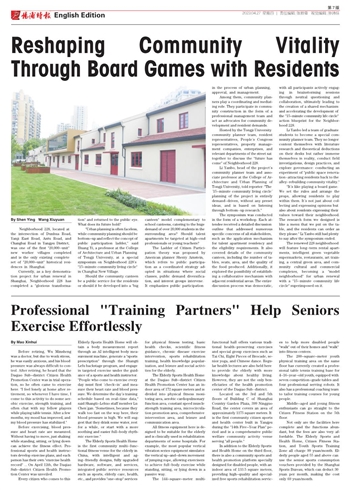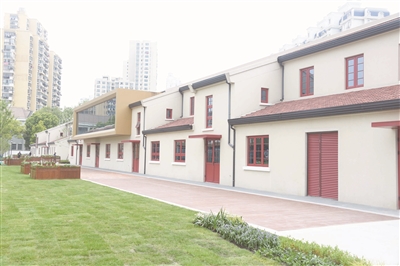By Shen Ying Wang Xiuyuan
Neighborhood 228, located at the intersection of Dunhua Road, Yanji East Road, Antu Road, and Changbai Road in Yangpu District, was one of the first "20,000-unit" new worker villages completed and is the only existing complete set of "20,000-unit" historical residences in Shanghai.
Currently, as a key demonstration project for urban renewal in Shanghai, Neighborhood 228 has completed a "glorious transformation" and returned to the public eye. What does its future hold?
"Urban planning is often faceless, while community planning should be bottom-up and reflect the concept of public participation ladder," said Huang Yi, a professor at the College of Architecture and Urban Planning of Tongji University, at a special symposium on Neighborhood 228's "15-minute community living circle" in Changbai New Village.
Should the community canteen be a public service for the residents or should it be developed into a "big canteen" model complementary to school canteens, catering to the huge demand of over 20,000 students in the surrounding area? Should talent apartments be targeted at high-end professionals or young teachers?
The Ladder of Citizen Participation theory was proposed by American planner Sherry Arnstein, which refers to public participation as a coordinated strategy adopted in situations where social classes, public demand diversification, and interest groups intervene. It emphasizes public participation in the process of urban planning, approval, and management.
Among them, community planners play a coordinating and mediating role. They participate in community construction in the form of a professional management team and act as advocates for community development and resident demands.
Hosted by the Tongji University community planner team, resident representatives, People's Congress representatives, property management companies, enterprises, and relevant departments of the street sat together to discuss the "future has come" of Neighborhood 228.
Li Yanbo, head of the project's community planner team and associate professor at the College of Architecture and Urban Planning of Tongji University, told reporter: "The '15-minute community living circle' planning of the project is entirely demand-driven, without any preset ideas, and is based on listening through bottom-up research."
The symposium was conducted in the form of a workshop. Each attendee received a detailed discussion outline that addressed numerous specific concerns of all stakeholders, such as the application mechanism for talent apartment residency and the eligibility requirements. It also covered details of the community canteen, including the number of tables, seats, area, and the quality of the food produced. Additionally, it explored the possibility of establishing a collaborative mechanism with adjacent residential areas. The entire discussion process was democratic, with all participants actively engaging in brainstorming sessions through neutral questioning and collaboration, ultimately leading to the creation of a shared mechanism and accelerating the development of the "15-minute community life circle" action blueprint for the Neighborhood 228.
Li Yanbo led a team of graduate students to become a special community planner team. They no longer content themselves with literature research and theoretical deductions on their desks but rather immerse themselves in reality, conduct field investigations, design practices, and explore governance: conducting an experiment of "public space renovation-attracting residents back to the alley-rebuilding community vitality."
"It's like playing a board game. We set the rules and arrange the props, allowing residents to play within them. It's not just about collecting and expressing opinions but also about residents expressing their values toward their neighborhood. The research form we designed is like a menu that we put on the table, and the residents can order as they please." Li Yanbo still had plenty to say after the symposium ended.
The renewed 228 neighborhood will feature long-term rental apartments, intelligent green vegetable supermarkets, restaurants, art training, a central green area, and community cultural and commercial complexes, becoming a "model neighborhood" for urban renewal with a "15-minute community life circle" superimposed on it.


